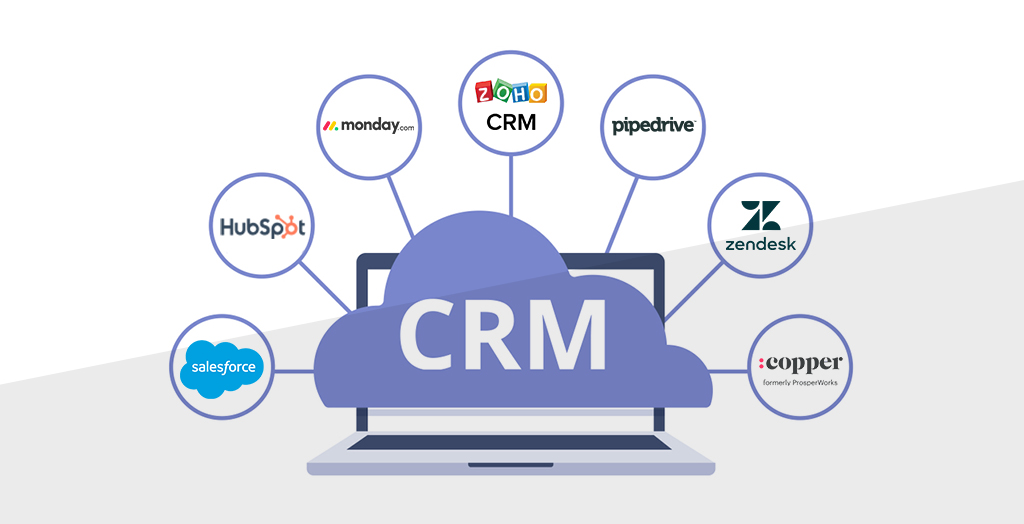How Can I Use Automation to Improve My Email Performance?
Seasonal and event-based campaigns are an excellent opportunity to engage your audience with timely and relevant content. Automation allows you to plan and execute these campaigns in advance,

In the rapidly evolving digital landscape, where customer expectations are continuously shifting, email marketing remains a powerful tool for businesses. However, to truly leverage its potential, automation can be a game-changer. By integrating automation into your email strategy, you can enhance performance, drive engagement, and ultimately boost your ROI. Here’s how you can use automation to improve your email performance:
1. Understanding Email Automation
Email automation involves using software to send pre-written emails to your subscribers based on specific triggers or schedules. This allows for personalized, timely, and relevant communication without the need for manual intervention each time an email is sent. The benefits are numerous: increased efficiency, consistency in messaging, and the ability to tailor content to individual subscriber behaviors and preferences.
2. Segment Your Audience for Precision
One of the foundational aspects of effective email automation is audience segmentation. By dividing your email list into distinct groups based on demographics, behavior, or engagement levels, you can create targeted campaigns that resonate more deeply with each segment. For example, a retailer could segment their list into new customers, repeat buyers, and those who haven’t purchased in a while. Automation can then be used to send personalized emails to each group, such as welcome series for new subscribers, re-engagement campaigns for inactive users, and exclusive offers for loyal customers.
3. Implement Trigger-Based Emails
Trigger-based emails are sent automatically in response to specific actions taken by subscribers. These can include welcome emails, abandoned cart reminders, post-purchase follow-ups, or re-engagement emails. For instance, if a customer abandons their cart on your e-commerce site, an automated email can be sent to remind them of the items left behind, potentially offering a discount to encourage completion of the purchase. This timely and relevant follow-up increases the likelihood of conversion and enhances the customer experience.
4. Personalize Your Communications
Personalization is a key factor in email marketing success. Automation allows for advanced personalization beyond just inserting the recipient’s name. By leveraging data on past interactions, purchase history, and browsing behavior, you can tailor email content to individual preferences. For example, if a subscriber frequently reads articles about fitness, you can send them tailored content related to fitness products or services. Personalized emails not only increase engagement but also build a stronger connection with your audience.
5. Optimize Send Times with Automation
Determining the optimal time to send emails can be challenging. Automation tools often come with features that allow you to analyze past email performance and subscriber behavior to identify the best times to reach your audience. Some platforms even offer send-time optimization, which automatically schedules emails to be sent at the most effective times based on individual subscriber preferences. This ensures your emails are more likely to be opened and acted upon, improving overall performance.
6. Automate A/B Testing
A/B testing is a crucial method for optimizing email campaigns by comparing different versions of an email to see which performs better. With automation, this process becomes more streamlined. Many email marketing platforms offer automated A/B testing features that allow you to test different subject lines, content, or call-to-actions (CTAs) without manually setting up each test. Automation tools can automatically analyze the results and implement the most successful version for future campaigns, saving you time and improving effectiveness.
7. Leverage Drip Campaigns
Drip campaigns are a series of automated emails sent over a period of time based on user actions or predefined schedules. They are particularly effective for nurturing leads, onboarding new users, or guiding subscribers through a sales funnel. For example, a SaaS company might use a drip campaign to educate new users about the features of their product over several weeks. By automating this process, you ensure consistent communication and keep your audience engaged throughout their journey.
8. Use Automation for List Management
Maintaining a clean and engaged email list is vital for email marketing success. Automation can help manage your list more effectively by automatically segmenting subscribers based on their engagement levels, sending re-engagement campaigns to inactive subscribers, and removing those who have opted out or bounced. By keeping your list up-to-date and focused on engaged subscribers, you improve deliverability rates and overall campaign performance.
9. Analyze and Adjust with Automation Insights
Automation tools often come with robust analytics and reporting features that provide valuable insights into your email campaigns. By regularly reviewing these reports, you can track key metrics such as open rates, click-through rates, conversion rates, and more. Automation platforms can also offer insights into subscriber behavior and engagement trends, helping you make data-driven decisions to optimize future campaigns. Continuous analysis and adjustment based on these insights ensure your email strategy remains effective and aligned with your goals.
10. Integrate with Other Marketing Channels
Email automation does not exist in isolation. Integrating your email strategy with other marketing channels can enhance overall performance. For example, by integrating with social media platforms, you can create automated email campaigns based on social interactions or promotions. Similarly, linking with your CRM system allows for more personalized and data-driven email communications. This holistic approach ensures a cohesive marketing strategy and improves the effectiveness of your email campaigns.
11. Automate Customer Feedback and Surveys
Gathering customer feedback is essential for understanding how your audience perceives your brand and services. Automation can streamline this process by sending out surveys or feedback requests automatically after specific interactions, such as a purchase or customer support interaction. This ensures timely feedback collection and provides valuable insights into customer satisfaction and areas for improvement. Automated follow-up emails based on survey responses can further enhance customer relationships and address any issues promptly.
12. Monitor and Improve Deliverability
Email deliverability is a critical factor in email performance. Automation tools can help monitor deliverability rates and identify potential issues such as high bounce rates or spam complaints. By addressing these issues promptly, you can improve your sender reputation and ensure your emails reach your intended audience. Automation platforms may also offer features to help maintain a healthy sender score and optimize your email deliverability over time.
13. Enhance User Experience with Dynamic Content
Dynamic content allows you to customize the content of your emails based on individual subscriber data and preferences. Automation tools can use this feature to show different content blocks or offers to different segments of your audience within the same email. For example, a travel company might use dynamic content to display destination recommendations based on a subscriber’s past travel history or interests. This level of personalization enhances user experience and drives higher engagement rates.
14. Automate Seasonal and Event-Based Campaigns
Seasonal and event-based campaigns are an excellent opportunity to engage your audience with timely and relevant content. Automation allows you to plan and execute these campaigns in advance, ensuring you capitalize on key dates and events. For example, you can set up automated holiday promotions, anniversary offers, or product launches to be sent out at the appropriate times. This not only saves time but also ensures your campaigns are timely and impactful.
15. Continuously Test and Refine Your Automation Strategy
The landscape of email marketing is constantly evolving, and so should your automation strategy. Continuously testing and refining your approach is crucial for staying ahead of trends and optimizing performance. Regularly review your automation workflows, test new approaches, and adjust based on performance data. This iterative process ensures that your automation strategy remains effective and aligned with your evolving business goals and audience preferences.
Incorporating automation into your email marketing strategy can significantly enhance performance and drive better results. From segmenting your audience and personalizing communications to optimizing send times and leveraging dynamic content, automation provides powerful tools to improve efficiency, engagement, and ROI. By utilizing these strategies and continuously refining your approach, you can harness the full potential of email automation and achieve greater success in your email marketing efforts.
FAQs: Using Automation to Improve Email Performance
What is email automation?
- Email automation involves using software to send pre-written emails to your subscribers based on specific triggers or schedules. This helps deliver timely, personalized, and relevant messages without manual intervention.
How can audience segmentation enhance my email automation strategy?
- Audience segmentation allows you to divide your email list into groups based on criteria like demographics or behavior. This enables you to send targeted, relevant content to each segment, improving engagement and conversion rates.
What are trigger-based emails, and how do they work?
- Trigger-based emails are automated messages sent in response to specific actions taken by subscribers, such as abandoning a shopping cart or signing up for a newsletter. These emails are timely and relevant, increasing the likelihood of engagement and conversion.
How can I personalize my emails using automation?
- Automation allows you to personalize emails beyond just addressing the recipient by name. You can use data such as past interactions, purchase history, and browsing behavior to tailor content to individual preferences.
What is send-time optimization, and how can it improve my email performance?
- Send-time optimization involves scheduling emails to be sent at the most effective times based on subscriber behavior and engagement patterns. Automation tools can analyze this data to ensure your emails reach recipients when they are most likely to open and act on them.
How does A/B testing work with email automation?
- A/B testing involves comparing different versions of an email to determine which performs better. Automation tools can facilitate this process by automatically sending different versions, analyzing the results, and applying the most successful version to future campaigns.
What are drip campaigns, and how can they benefit my business?
- Drip campaigns are a series of automated emails sent over time based on user actions or predefined schedules. They are effective for nurturing leads, onboarding new users, or guiding subscribers through a sales funnel, ensuring consistent and engaging communication.
How can automation help with list management?
- Automation can streamline list management by automatically segmenting subscribers, sending re-engagement campaigns to inactive users, and removing those who have opted out or bounced. This helps maintain a clean and engaged list, improving deliverability and performance.
What insights can I gain from automation analytics and reporting?
- Automation platforms offer analytics and reporting features that provide insights into key metrics like open rates, click-through rates, and conversion rates. These insights help you track performance, identify trends, and make data-driven decisions to optimize future campaigns.
How can I integrate email automation with other marketing channels?
- Integration with other marketing channels, such as social media or CRM systems, allows for a cohesive strategy. For example, you can automate email campaigns based on social interactions or use CRM data for more personalized communications.
Get in Touch
Website – https://www.webinfomatrix.com
Mobile - +91 9212306116
Whatsapp – https://call.whatsapp.com/voice/9rqVJyqSNMhpdFkKPZGYKj
Skype – shalabh.mishra
Telegram – shalabhmishra
Email - info@webinfomatrix.com
What's Your Reaction?









.png)










